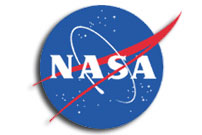Welcoming NASA Science’s New Astrophysics Division Director Dr. Mark Clampin, Thomas Zurbuchen “I am pleased to announce that I have made a selection to permanently fill the critical position of Astrophysics Division Director. Dr. Mark Clampin will join the Science Mission Directorate (SMD) on August 15. I want to extend my sincere appreciation to Paul Hertz, who has served as the Astrophysics Division Director for over 10 years. Paul’s efforts […]
One Of Everything: The Breakthrough Listen Exotica Catalog “We present Breakthrough Listen’s “Exotica” Catalog as the centerpiece of our efforts to expand the diversity of targets surveyed in the Search for Extraterrestrial Intelligence (SETI). As motivation, we introduce the concept of survey breadth, the diversity of objects observed during a program. … As far as we are aware, this is the first object list in recent times with the purpose […]
AMS-02: Shining light on elusive dark matter, ESA “The findings hint at a new phenomenon but it is unknown whether the positron ratio comes from dark energy particles colliding with each other or from pulsating stars in our galaxy that produce antimatter.” First Result from the Alpha Magnetic Spectrometer on the International Space Station: Precision Measurement of the Positron Fraction in Primary Cosmic Rays of 0.5-350 GeV, Physical Review Letters […]
Space telescope to get software fix, Nature “Long-standing but little-publicized software problems, and insufficient memory in one of the detectors, have clouded the vision of the world’s leading -ray telescope to the highest-energy -rays. The flaws do not seriously threaten the satellite’s observations at low energies. But they have hampered studies at energies greater than 10 billion electronvolts (GeV), which could yield clues to dark matter and the powerful stellar […]
Space science caught in a Webb, Space Review “Speaking at a workshop on suborbital research held last Wednesday at NASA Goddard, Webster Cash, an astronomer at the University of Colorado, said there was growing skepticism in the astronomy community that the top-priority large mission from the 2010 report, the Wide-Field Infrared Survey Telescope (WFIRST), would even be started. “It’s bleak out there. Space science has effectively ground to a halt” […]
Telescope debacle devours NASA funds, Florida Today “Alan Boss, an astronomer at the Carnegie Institution for Science in Washington who chairs NASA’s independent advisory committee on astronomy research, worries the project could eat up a growing share of the nation’s funding for astronomy and space science. He’s gone so far as to call the telescope’s woes “NASA’s Hurricane Katrina.” NASA has since removed the project from its astrophysics budget, making […]
NASA’s Gravity Probe B Confirms Two Einstein Space-Time Theories “NASA’s Gravity Probe B (GP-B) mission has confirmed two key predictions derived from Albert Einstein’s general theory of relativity, which the spacecraft was designed to test. The experiment, launched in 2004, used four ultra-precise gyroscopes to measure the hypothesized geodetic effect, the warping of space and time around a gravitational body, and frame-dragging, the amount a spinning object pulls space and […]


